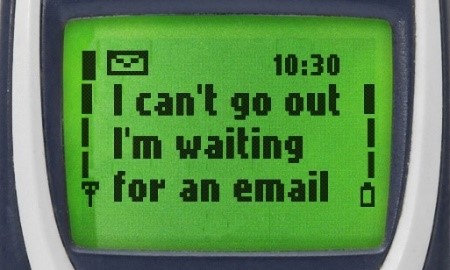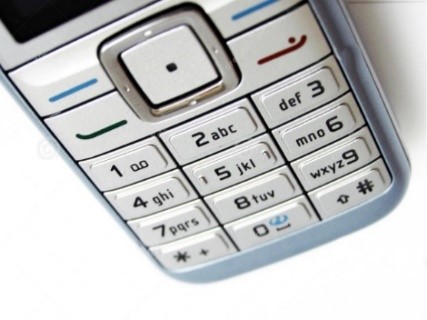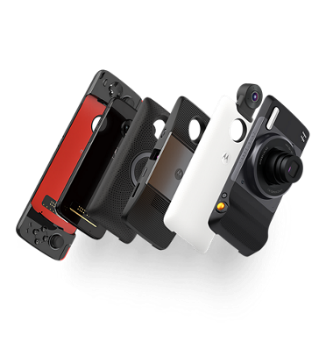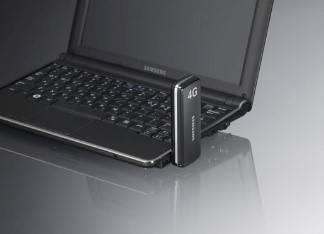Text messaging as a telecommunications service had been around for years before the development of GSM in 1982. At that time, existing messaging systems were:
• Not optimized for mobility, for example: facsimile, telex, electronic mail;
• Optimized for mobility: alphanumeric radio paging, voice mail.
Paging is a one-way communication, there is no acknowledgement nor guarantee of delivery. A recipient of a voice mail has no way of responding directly with a text message. These means of mobile communication left much more to be desired.
With the objective to offer a simple, straightforward two-way text communication, proposals for text messaging as a service in GSM were made by the co-operating Nordic operators as well as by the co-operating German and French operators via different methods.
In the period of two years within 1983 and 1984, the Franco-German cooperation program proposed a service that uses a dedicated services center and transmits the text messages over existing signaling paths of the GSM telephony system.
Within the period from 1985 to 1986, the GSM committee specified the service features of the Short Message Service (SMS). Most contributions came from Germany and France. From 1987 onwards, the technical realization of SMS was standardized in a small group called Drafting Group Message Handling and involved contributors from other European countries as well.
SMS was designed as a point-to-point service that is acknowledged and guaranteed by the network. It operates in a store and forward mode (and not real time like a voice call), to enable an SMS to be delivered later if the mobile phone is out of coverage or switched off. The SMS service uses the signaling link, and not a dedicated circuit switched connection which is reserved for voice calls. For this reason, SMS does not interrupt with an ongoing voice call, SMS can be sent or received while the user is talking on the phone. In addition, SMS cell broadcast had also been realized for local services, weather, traffic information. The cell broadcast supports 93 characters, is point-to-multipoint, not acknowledged and not guaranteed.
Utilizing signaling channel of lower priority with a capacity 140 bytes for SMS leads to the 160-character limit. SMS can be sent and received as 160 7-bit characters, 140 8-bit characters, or 70 16-bit characters which are used to encode languages such as: Hindi, Arabic, Chinese, Korean, Japanese, Russian, et cetera. The 160-character limit also gave rise to many creative and popular abbreviations such as: typing 2 in place of to, gr8 for great, and b4 for before.
Although the first SMS was sent in 1992, the mobile phones at the time was not capable of sending SMS, only able to receive and display it, and not all of the mobile phones were able to do that. By 1994 every new mobile phone was capable of receiving SMS. By 1995 every network was capable of supporting SMS; and International Roaming for SMS became available. It was then when the discovery of SMS by youngsters and becoming a part of the youth culture began. By 1996 every new mobile phone model was also capable of sending SMS.
In the 1990s, composing an SMS on the keypad of a mobile phone took painstaking effort. The 26 alphabets had to be mapped to the 8 digits (excluding 1 and 0) on the keypad. Pressing the digit 2 once allows ‘a’ to be typed, pressing 2 twice allows ‘b’ to be typed, and so on. To spell ‘hello’, the user would have to press 44-33-555-555-666. Nevertheless, SMS took off unexpectedly among the younger generation, due to lower cost as compared to a voice call, and their willingness to adopt a new way to communicate.
With the introduction of T9, a method of predictive typing, that tries to guess and form the words when the keypads are pressed, a user only had to press 4-3-5-5-6 for “hello”. In the subsequent years, with the advent of PDA phones with QWERTY key pad layouts, and subsequently touchscreens on the smartphones, composing an SMS had become much easier and faster. Efforts continue to be put in to make typing even faster, such as the Swype input method.
Much development in the industry had happened that enables SMS to be easily sent in bulk and utilized as a business communication tool, and to easily check the length of the SMS before it is broadcasted to intended recipients.
In recent years, SMS may have suffered a slight decline due to the popularity of instant messaging over apps on the mobile broadband, such as Whatsapp, Line, Wechat, and Messenger. It is nevertheless still a widely used technology for business or personal use. In hind sight, the success of SMS due to adoption by the mass, came as a surprise to those who first defined or offered the service.






